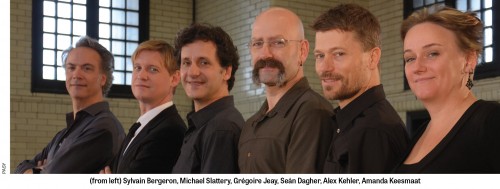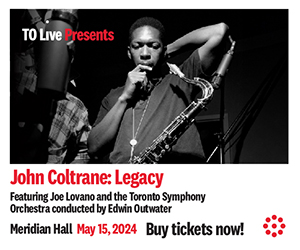 Let us now take a moment to praise John Dowland. The early music movement owes much to the famed English composer and master of the Renaissance lute song. He gave us a sizeable body of work that has come to function as a kind of soundtrack to the English Renaissance for modern listeners. As impressive, in his own time, Dowland was famous throughout Europe, not only as a composer of popular songs (nearly 90) but also for his solo lute music (nearly 90 of those works as well).
Let us now take a moment to praise John Dowland. The early music movement owes much to the famed English composer and master of the Renaissance lute song. He gave us a sizeable body of work that has come to function as a kind of soundtrack to the English Renaissance for modern listeners. As impressive, in his own time, Dowland was famous throughout Europe, not only as a composer of popular songs (nearly 90) but also for his solo lute music (nearly 90 of those works as well).
As a Catholic in late Elizabethan England, though, Dowland found it difficult to make a living in the early stages of his career. Although he was a trained musician with a Bachelor of Music from Oxford (apparently they gave out music degrees in the 16th century too), Dowland blamed intolerance against Catholics for his inability to get a position in the English court, eventually leaving England in 1594, to make his fortune abroad on the Continent. His exceptional talents took him far and wide, and he earned renown from Denmark to Italy. After nearly two decades abroad, Dowland finally returned to England as a lutenist in the Catholic court of James I. Although the well-travelled composer was a citizen of the world who, as the story goes, eventually came home to England, he has come to symbolize a particularly English sound for the music of his time.
I emphasize Dowland’s Englishness this way because there’s a group playing in Toronto in March that proposes an alternate history for him. The weekend of March 27 and 28 will see Dowland reimagined as a composer of Irish folk music by Montreal early music group La Nef, who will come to Trinity St-Paul’s Centre as part of the Toronto Consort’s guest artist series.
Granted, there is some evidence that supports this appropriation/repatriation of Dowland, but the way I see it, it’s spurious at worst, and circumstantial at best. He was a Catholic, it’s true, but there were more than a few English Catholics at the time. There’s also the dedication Dowland affixed to his song “From Silent Night” to “my loving countryman, Mr. John Foster the younger, merchant of Dublin, in Ireland,” but Foster could very well have been an English expat. There’s not a whole lot else to convince a sceptic like me that the composer merits repatriation. Nevertheless, Ensemble La Nef has boldly decided to reimagine the father of English song as a full-on Irish composer, rearranging his music in a folk style and playing the tunes on folk instruments like the cittern, the Irish flute and the violin along with historical instruments like the viola da gamba and theorbo. So if it seems like La Nef was determined to turn the early music world on its ear when they released Dowland in Dublin in 2012, they succeeded. It was a great success for the group, selling out every copy at several concerts on a North American tour. When La Nef finally makes a stop in Toronto to promote the album, Toronto audiences will not only hear a new perspective on Dowland’s music, but as important, get to decide for themselves if it works..
“When I first thought of the project, I was doing folk song versions of art songs and I was interested in taking so-called serious music and seeing if it could work in a folk context,” says citternist Seán Dagher. “I realized that Dowland’s music could serve those particular needs – his music has some really beautiful, simple melodies that lend themselves to a folk adaptation.”
Dagher’s interpretations finally came to fruition when he found himself performing on his cittern at a party with some members of La Nef in attendance. He decided to take a risk and perform his own folk-inspired version of Dowland’s tune “Come Again” for the veteran medieval and Renaissance group. La Nef was delighted with Dagher’s performance and decided then and there that this was an idea that had enough potential for a full album. Combing Dowland’s 90 songs, they selected 17 that would lend themselves to a folk interpretation and proceeded to make a total overhaul of the music – stripping away almost all of the composer’s arrangements and making their own in the process.
“I really tried to treat Dowland’s music like it’s an arrangement of a folk song,” Dagher explains. “I re-harmonized a lot of the tunes, I wrote new instrumental parts and got rid of Dowland’s original counterpoint. I just wanted to treat Dowland’s songs like I had just found them in a book of Irish tunes as opposed to fully worked-out compositions with all the parts written out for me.”
So how much of the album is Dowland and how much is Dagher? Well, let’s just say artistic licence is involved. “In one tune, I deliberately tried to contradict everything Dowland had done, just as an arranging exercise,” Dagher says. “That actually worked out really well! In another arrangement, when I went back to see what Dowland had done I found that he had actually done something quite similar. So sometimes we get very far away from what Dowland did, and others still show the listener the original material we’re coming from artistically.”
The group was prepared (and unafraid) to give any song of Dowland any kind of treatment they could in both the folk and the Irish vein as long as the finished product was a song they could play well. If you know the original tune, the results are surprising. “‘If ever thou didst find’ became a straight up folk song after we were finished with it,” Dagher says, “but then we took ‘His Golden Locks’ and pared that down to just a lament sung over a drone accompaniment, while ‘Sleep, Wayward Thoughts’ became a rousing bawdy song, so there’s a lot of variety.”
Artistic licence, Irish instruments and a free hand at arranging went a long way toward creating an Irish Dowland. But there was one more piece of the puzzle that had to fall in place. There’s one other musician on the Dowland in Dublin CD, who has the unique ability to make this group sound like an Irish band – tenor Michael Slattery.
Slattery, himself of Irish descent, has a proven ability to bring a distinctly Irish sound to his songs when he wants to – studying Irish music in Ireland and making a disc called The Irish Heart definitely count towards a superior understanding of Irish music. Slattery jumped at the chance to collaborate with the group. “When I was looking for an Irish project to work on, La Nef seemed like the obvious choice for a group to work with because their music has such a creative spark to it,” Slattery says. “When we decided to collaborate, we all came to the project with a really strong creative vision and because of that, the end result is powerful music that really speaks to people.”
Slattery especially likes the way that La Nef and Dagher’s creative approach opened the door to a greater range of musical expression. “A lot of what goes into making music now involves these very strict, controlled decisions,” he explains. “Musicians will be very specific and spend all this energy on how long a particular crescendo is going to last or how loud or soft every single person in the group is going to get until the music becomes very regimented. What I like in La Nef’s approach is that it actually sounds like how people would want to express themselves. Each song we do together becomes a tiny universe that begins and ends with a poem.”
Dagher and Slattery are both passionate defenders of their approach to the music and are quite able to articulate why they made the decisions they did. When I ask them if they considered that an Irish Dowland might offend more conservative – or just hibernophobic – listeners, the two are completely unapologetic. “There’s no shortage of historically informed recordings of Dowland,” Dagher counters, when I ask whether listeners would take offence. “If our disc was the first recording ever of his music, for sure I would want it to be a historically accurate recording, but there are already hundreds of others. This version is a chance for the audience to hear the music in a different way.”
Slattery agrees that the project was more about pushing musical boundaries than reclaiming Dowland in the traditional canonic sense. “Whether Dowland was actually Irish or not, we’ll never know for certain,” he explains. “The point of the disc was that there was just enough musicological evidence for us to give ourselves an excuse to give ourselves completely to the project. Once we had that idea, that shared creative vision, to run with, we were ready at that point to take control of the music and see what other life there might be in it.”
Dagher is also quick to point out that criticism of the group’s Dowland cuts both ways. “Most of the audience really likes it. Some people do find it a desecration of Dowland, but then again, other people don’t like it because our interpretations don’t sound Irish enough.” It seems there’s no point trying to please everyone.
So is there any truth to Dowland’s lost Irish heritage, and if so, does that give an artist – any artist – the artistic licence to rework a composer’s music in a completely different style? The implicit answer that La Nef gives is that asking such questions about authenticity and historical interpretation is to miss the point entirely. What makes their interpretation of Dowland a rarity in the early music world is the fact that this group is using their own historical research as a source of artistic inspiration rather selling the result as the recreation of an “authentic” sound.
For decades, historically informed artists have proffered the notion that their versions of the great composers were the correct ones – more historically accurate, more genuine. When the TSO plays Mozart or Beethoven, the early music movement says, they’re doing it with the wrong instruments and gear – the composers in question would have used older violins, wooden flutes, and completely different bows than the relatively new instruments that we’ve become accustomed to today. Interpretation too, is a matter of looking at the historical evidence on hand, determining how the composer would have performed his own music, and playing it accordingly.
What La Nef argues, with Dowland in Dublin, is that serious artists are free to imagine a complete historical recreation of a composer’s music – as if any early musician ever actually achieved that – but are equally free to use history for their own ends. La Nef’s Dowland in Dublin then, is Dowland as he might have been in a different history, in another reality; their Dowland challenges us to imagine a new music along with them. Let imagination take flight.
David Podgorski is a Toronto-based harpsichordist and music teacher. His regular Early Music column can be found on page 23.



